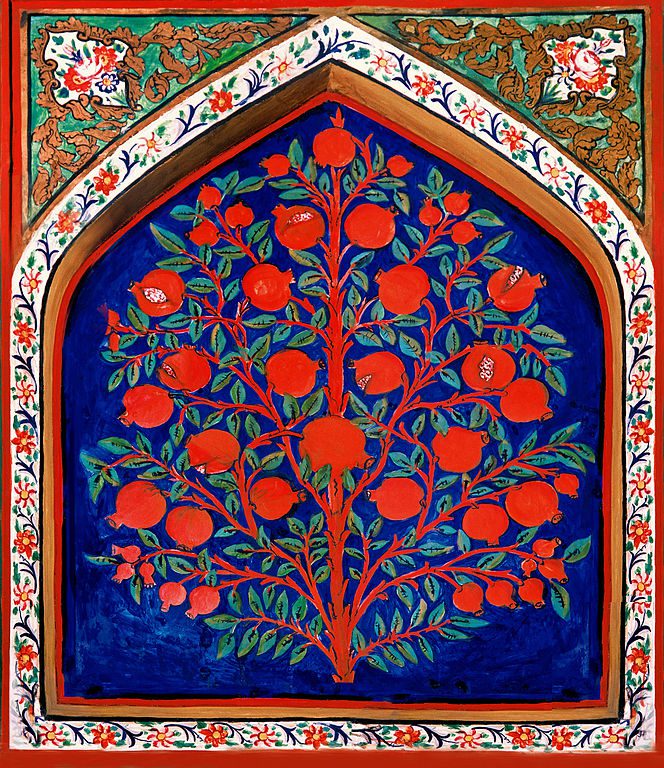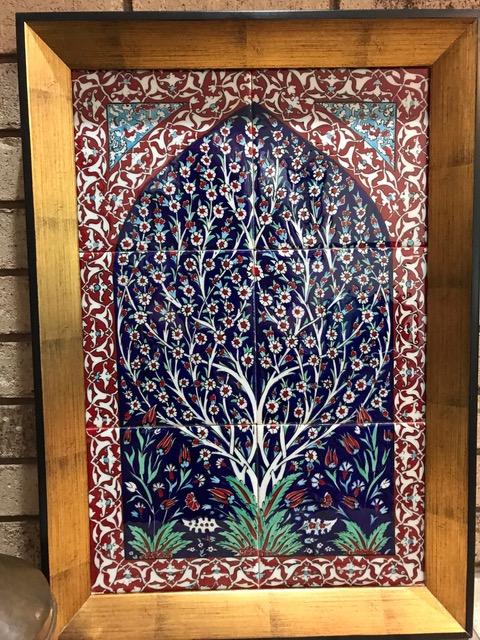
(Wikimedia Commons public domain image)
With a weekend looming before you, are you afraid that it’s going to be another interminable wasteland of playing Solitaire and binge-watching re-runs of I Love Lucy? Take heart. Bid adieu to ennui and despair. The Interpreter Foundation has your back. Here are two articles that have appeared just today — perfect for the weekend! — on the Foundation’s website:
“Withstanding Satan’s Siege through Christ’s Iron Rod: The Vision of the Tree of Life in Context of Ancient Siege Warfare,” written by Jared T. Marcum
Abstract: Nothing was more terrifying in the ancient world than a siege. Besiegers disregarded normal conventions of war and either utterly slaughtered or enslaved a city’s residents. Nephi used siege warfare imagery — including fire arrows, blinding, and being led away into captivity — to teach his brothers the importance of holding fast to Christ’s iron rod (see 1 Nephi 15:24). By analyzing this scripture and the vision of the Tree of Life in context of ancient siege warfare, we learn how Satan besieges God’s people, cuts off their access to the Tree of Life, draws them away through scorn, blinds them, and yokes them with a yoke of iron. Christ, in contrast, extends his iron rod through Satan’s siege, inviting us to hold fast to his word, accept him as our covenant family head, and join him in his work by speaking his word. Those who act on Christ’s invitation will find safety and joy in Christ’s kingdom.
“Interpreting Interpreter: Besieged by Satan,” written by Kyler Rasmussen
This post is a summary of the article “Withstanding Satan’s Siege through Christ’s Iron Rod: The Vision of the Tree of Life in Context of Ancient Siege Warfare” by Jared T. Marcum in Volume 58 of Interpreter: A Journal of Latter-day Saint Faith and Scholarship. An introduction to the Interpreting Interpreter series is available at https://interpreterfoundation.org/interpreting-interpreter-on-abstracting-thought/.
The Takeaway: Marcum argues that the vision of the tree of life employs the imagery of siege warfare, with Satan besieging the people of God with fiery darts of scorn and carrying away blinded captives with an iron yoke. Christ, in contrast, extends an iron rod to help us hold on to his word, allowing us to find safety in the kingdom of God.

(Wikimedia Commons public domain image)
The notion of the “Tree of Life” has interested me for a very, very long time. Back in 2011, for example, in what turned out to be the last days of the classic Foundation for Ancient Research and Mormon Studies, which became the pre-2012-transformation Neal A. Maxwell Institute for Religious Scholarship, we published a book entitled The Tree of Life: From Eden to Eternity (edited by John W. Welch and Donald W. Parry [Provo: Neal A. Maxwell Institute for Religious Scholarship and Salt Lake City: Deseret Book, 2011]. (For a short summary review, see here.). Here’s a précis from Amazon.com:
No image of eternal life is more powerful or persistent than the tree of life. From the paradisiacal Garden of Eden to the apocalyptic New Jerusalem, the tree of life dominates the landscape, being mentioned explicitly thirty times in the scriptures and alluded to on many other occasions. From the temple to the cross, the tree of life invites all to come unto Christ, to become planted by rivers of living water, to bring forth and enjoy the fruits of God s love that are sweet above all else. This uplifting and beautifully-illustrated book contains original essays by leading LDS and other scholars including Donald W. Parry, Daniel C. Peterson, Andrew C. Skinner, John W. Welch, and Margaret Barker that focus on the symbol of the tree of life in the Bible, early Christianity, and the Book of Mormon, as well as in Southeast Asian, Islamic, and Mayan temples, cultures, and art.
For that volume, I did a piece on the Tree of Life as it appears in the Qur’an. It may be online somewhere, but my cursory search for it has not found it. Perhaps, in the chaos and dysfunction that occurred in 2012 at the demise of the ancien régime at the Maxwell Institute, it was never posted. The old books were not valued — as a matter of fact, they were pulped — by the new administration.
Here’s something that I wrote for the Deseret News back in 2010: “How Nephi understood the Tree of Life (and why the Book of Mormon is an ancient record)”
Prior to that, I had written “Nephi and His Asherah,” for the Journal of Book of Mormon Studies 9/2 (2000), which was pretty much a condensed form of “Nephi and His Asherah: A Note on 1 Nephi 11:8-23,” in Davis Bitton, ed., Mormons, Scripture, and the Ancient World: Studies in Honor of John L. Sorenson (Provo: Foundation for Ancient Research and Mormon Studies, 1998).
I regard the presence of this image in the Book of Mormon, in the particular form that it takes, as evidence of an ancient Near Eastern background for the book that Joseph Smith was unlikely to have dreamed up on his own.

(Photo from my personal iPhone)
Finally, as part of my continuing charitable effort to fuel the righteous indignation of critics of the Church of Jesus Christ of Latter-day Saints and of religious faith more generally, I offer here a sextet of appalling horrors that have been drawn from the Christopher Hitchens Memorial “How Religion Poisons Everything” File™:
“If You Like America, Thank Christianity”













